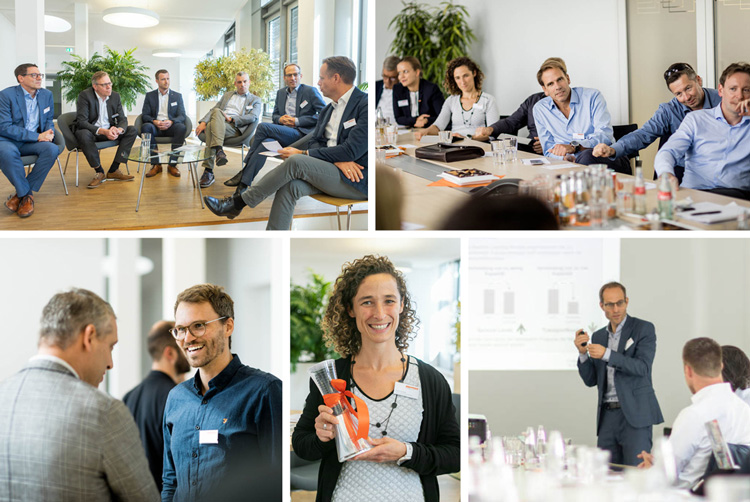How apetito, Lampenwelt and TALLY WEiJL Trading design their supply chains with 4flow
The e-commerce industry has grown rapidly over the last few years, with current forecasts showing that the shift from brick and mortar to online business is far from over. For the supply chain, this development presents itself as an opportunity and a challenge at the same time. Businesses need to consider ways to make their supply chains future-proof in order to adapt to quickly changing conditions – and they must determine how distribution concepts can properly meet the increasing service requirements of their customers. How this is handled by apetito, Lampenwelt and TALLY WEiJL Trading – along with the innovative solutions they develop for their specific business models – was the topic at 4flow Logistics Day in Berlin, Germany.

TALLY WEiJL Trading readies its supply chain for e-commerce
While brick-and-mortar retail is on the wane, the importance of e-commerce continues to increase for many companies. For the Swiss textile retailer TALLY WEiJL Trading, with a large network of stores, e-commerce accounted for approximately one percent of its total revenue in 2018 – with this share expected to reach more than 20 percent in 2022. Such a significant increase calls for a redesign of the supply chain, and particularly in distribution. Stores must be consolidated, new payment systems introduced and returns management must be regulated.
While time has always been a critical factor for the supply chain, it is even more the case with e-commerce. Ordered today, delivered tomorrow – this is the expectation. Together with 4flow, TALLY WEiJL Trading determined different scenarios for the redesign of its supply chain. Lead time was one of the key selection criteria in designing the supply chain optimized for the future. In many places, product life cycles are shorter while the range is becoming more complex. Companies increasingly encounter this with digitization and automation. "New technologies such as robotic process automation, big data or machine learning can help by streamlining in-house processes or providing a time gain by means of forecasting," said Marc Schleyer, vice president at 4flow.
Lampenwelt to expand its e-commerce
Which degree of automation makes sense, depends on many factors. The online retailer for lamps and lighting, Lampenwelt, has automated its central warehouse to the degree that on a single shift, 6,500 parcels are brought to the shipping area. High seasonal fluctuations in demand, however, must be considered as well. "Together with 4flow we have developed a very efficient and scalable setup. A fully automated supply chain isn’t feasible when there’s twice the volume ordered during the dark months when more lamps are purchased," said Dr. Oliver Merz, CFO at Lampenwelt. And the stakeholders also play a role here because not every supplier is at all close to being on the same technical level.
Concepts and technologies, therefore, always need to be adapted to individual situations and remain as flexible as possible. At the same time, a supply chain that is specifically focused on e-commerce can also act as an enabler for expansion.
apetito optimizes the last mile
The topic of sustainability is coming into sharper focus. According to Jochen Engelking, Head of Logistics at apetito, a producer of frozen meals and catering concepts, "Packaging formats that rely on plastic and disposable items will not be standard in a few years from now. This is less a matter of cost than a matter of acceptance. It was for this reason that sustainability was an essential factor in developing our future distribution network with 4flow." Although apetito’s share in e-commerce is currently still small, a look at the target group’s changing demographic reveals this is about to shift. In order to prepare for it, the company started early on to transform their supply chain by redesigning distribution to increase efficiency and provide better customer service. The specific focus was on the last mile. In order to gain time, apetito now warms their meals on the road in specially equipped transporters that leave from transshipment points.
E-commerce as innovation driver
Also in terms of last mile delivery, e-commerce can be perceived as both a curse and a blessing. On the one hand, online orders create much more complexity for urban logistics. Stephan Seeck from the University of Applied Sciences Berlin, Germany, is currently researching the topic of parcel delivery in urban areas. "At any given moment between 11 am and 5 pm in Berlin, Germany, some 700 streets are blocked by parcel delivery vehicles, making them only partly accessible," he said. On the other hand, growing pressure is resulting in new solutions that will also provide an advantage for logistics in other areas as well.
In sum, e-commerce can be seen to drive the supply chain to new reaches – on the last mile and along the entire supply chain too.
Author: ANDREAS KICK, COO at 4flow
